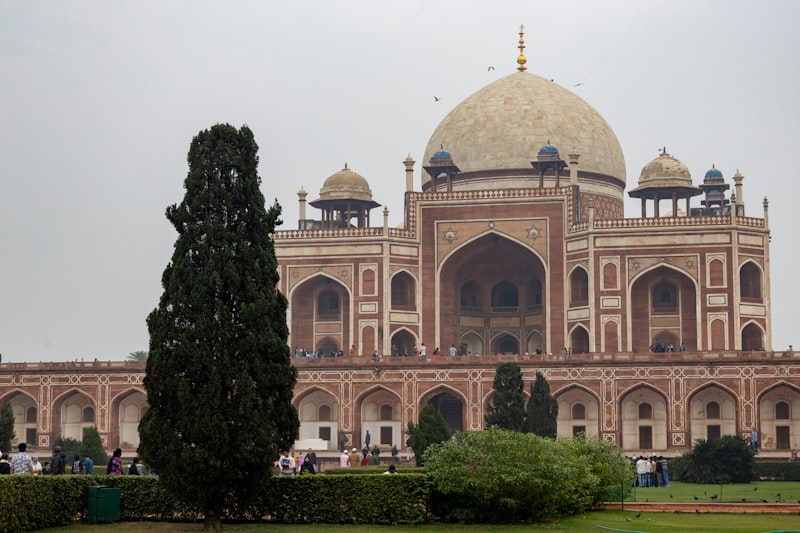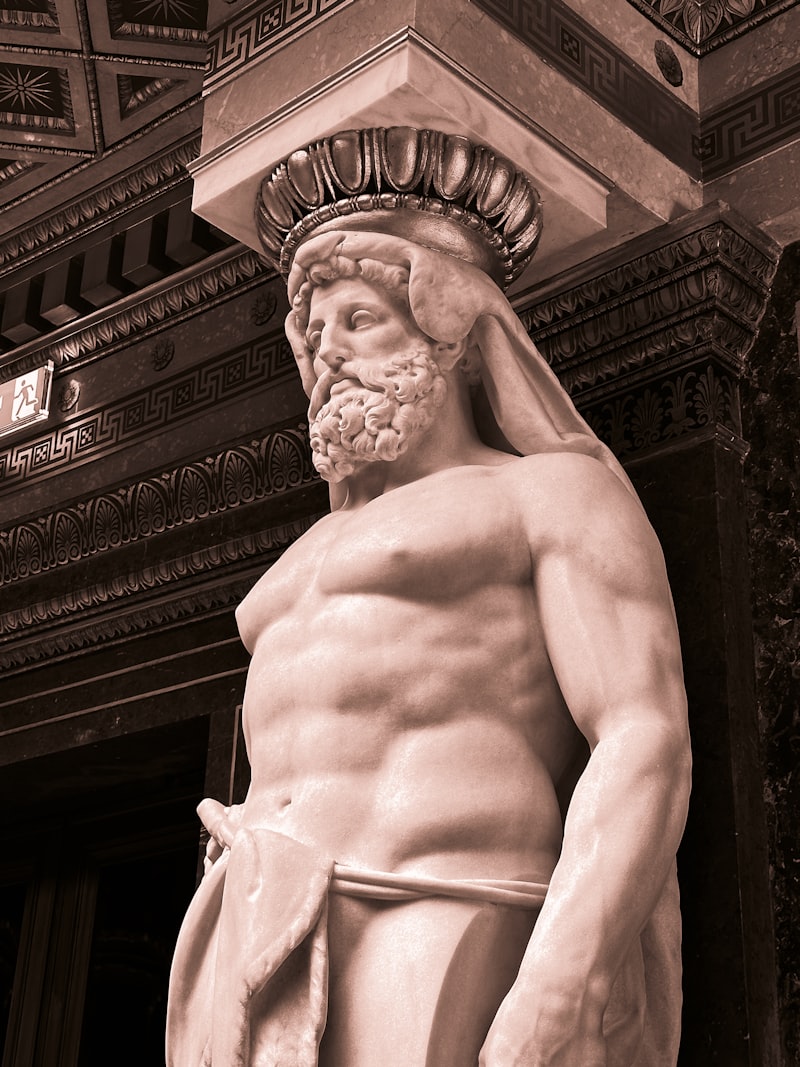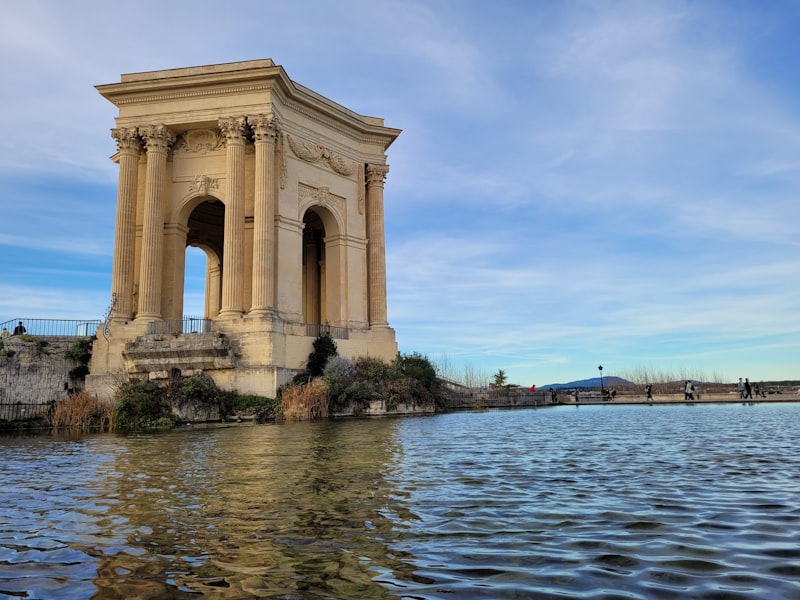Imagine standing before the majestic pyramids of Egypt, colossal stone structures that have stood for millennia, still whispering tales of ancient pharaohs and the mysteries of the Nile. Each stone meticulously placed, each hieroglyphic a clue to a civilization that thrived in a land where gods walked among mortals.
Or wander through the Acropolis of Athens, where the Parthenon reigns supreme, a symbol of Greek power and intellectual prowess. Its marble columns and intricate friezes dedicated to Athena, goddess of wisdom, embody the ideals of democracy and artistic perfection that defined ancient Greece.

In Rome, the Colosseum stands as a testament to the grandeur of the Roman Empire. Imagine the roar of the crowds as gladiators battled fierce beasts, the amphitheater alive with the drama of ancient spectacle. It remains a symbol of power and entertainment, where history echoes through its corridors.
Closer to home, the Taj Mahal in India stands as a symbol of eternal love and architectural brilliance. Its white marble facade shimmers in the sunlight, a mausoleum dedicated to Mumtaz Mahal, beloved wife of Emperor Shah Jahan. The intricate gardens and reflective pools create a serene ambiance, where love transcends even the boundaries of time.
Unveiling the Timeless Marvels: 10 Must-Visit Historical Monuments Around the Globe
From the ancient wonders of Egypt to the majestic castles of Europe, the world is brimming with historical monuments that stand as testaments to human ingenuity and culture. These monuments not only tell stories of civilizations past but also captivate us with their architectural splendor and historical significance. Let’s embark on a journey to explore 10 of the most awe-inspiring historical landmarks across different continents.
-
The Great Wall of China: Spanning over 13,000 miles, this colossal structure is a symbol of China’s rich history and ingenuity. Built over centuries to defend against invasions, it offers breathtaking views of the Chinese landscape.
-
The Colosseum, Italy: In the heart of Rome, the Colosseum stands as a monument to the grandeur of ancient Roman engineering. This amphitheater once hosted gladiator contests and is now a symbol of Rome’s imperial past.
-
Machu Picchu, Peru: Nestled in the Andes Mountains, Machu Picchu is an ancient Incan city that defies both time and logic. Its intricate stone architecture and breathtaking mountain vistas make it a must-visit for history enthusiasts and adventurers alike.
-
Taj Mahal, India: A testament to eternal love, the Taj Mahal is renowned for its stunning white marble architecture and meticulous gardens. This UNESCO World Heritage site attracts millions of visitors each year, drawn by its romantic allure and historical significance.
-
Pyramids of Giza, Egypt: The last standing wonder of the ancient world, the Pyramids of Giza continue to awe visitors with their sheer size and architectural precision. These monumental tombs have stood the test of time for over 4,500 years.
-
Acropolis of Athens, Greece: Perched high above Athens, the Acropolis is a symbol of ancient Greek civilization and its contributions to art, philosophy, and democracy. The Parthenon, dedicated to the goddess Athena, remains its most iconic structure.
-
Petra, Jordan: Carved into pink sandstone cliffs, Petra is an ancient city that flourished as a trade hub in the Middle East. Its intricate rock-cut architecture, including the famous Treasury, continues to intrigue archaeologists and tourists alike.
-
Easter Island Moai, Chile: Scattered across Easter Island, these giant stone statues known as Moai are a testament to the island’s Polynesian past. Carved centuries ago, they are shrouded in mystery, captivating visitors with their enigmatic presence.
-
Angkor Wat, Cambodia: The largest religious monument in the world, Angkor Wat is a masterpiece of Khmer architecture and a symbol of Cambodia’s cultural heritage. Its intricate bas-reliefs and towering spires reflect the grandeur of the ancient Khmer Empire.
-
Stonehenge, United Kingdom: A prehistoric marvel, Stonehenge continues to puzzle archaeologists and historians with its mysterious arrangement of massive stones. Its exact purpose remains debated, adding to its allure as a site of wonder and speculation.
Each of these historical monuments offers a glimpse into the rich tapestry of human history and achievement. Whether you’re drawn to ancient civilizations, architectural wonders, or tales of romance and mystery, these 10 must-visit landmarks promise an unforgettable journey through time.
Journey Through History: Exploring the World’s Most Iconic Cultural Monuments
Imagine standing before the Great Pyramid of Giza, its majestic limestone blocks towering above, built over 4,000 years ago. This ancient wonder, a testament to the ingenuity of the Egyptians, leaves visitors pondering over its construction and purpose. How did they align these colossal stones so precisely? What secrets lie within its chambers, still waiting to be unearthed?
Transitioning across continents, we encounter the mystical Machu Picchu nestled high in the Andes Mountains of Peru. This “Lost City of the Incas” remains shrouded in mystery, its purpose speculated to be a royal estate or a sacred religious site. As the morning mist clears, the terraced slopes and intricate stone masonry reveal a civilization that thrived amidst challenging terrain, leaving behind a legacy of architectural prowess.

Traveling eastward, the serene beauty of the Taj Mahal in India unfolds before our eyes. Commissioned by Emperor Shah Jahan as a symbol of love for his wife Mumtaz Mahal, its white marble facade glows ethereally at sunrise and sunset. The intricate calligraphy and floral motifs adorning its walls speak of an era where craftsmanship reached unparalleled heights, blending Persian, Islamic, and Indian architectural styles seamlessly.
Venturing into Europe, the Colosseum in Rome stands as a testament to the grandeur and brutality of ancient Roman civilization. Once hosting gladiatorial contests and spectacles for public entertainment, its imposing arches and corridors echo with the cheers and roars of a bygone era, inviting contemplation on the intertwining aspects of power, leisure, and culture in Roman society.
Beyond Beauty: Discovering the Stories Behind 10 Iconic Historical Monuments
Imagine standing before the Great Pyramid of Giza, its colossal structure towering against the desert sky. Built over 4,500 years ago, it remains a symbol of ancient Egypt’s ingenuity and the enduring mystery of how it was constructed without modern technology.
Moving to Europe, the majestic Colosseum in Rome beckons with stories of gladiators battling for glory amidst roaring crowds. It stands as a symbol of Roman engineering prowess and entertainment culture, captivating visitors with its grandeur and historical significance.
Further east, the Great Wall of China winds through rugged landscapes, a monumental feat of defensive architecture spanning centuries. Built to protect against invaders, it whispers tales of dynasties and strategic prowess, offering breathtaking views and a glimpse into China’s imperial past.
Across the Atlantic, the Statue of Liberty stands tall, a beacon of freedom and hope for millions of immigrants arriving in America. A gift from France in 1886, it symbolizes the enduring friendship between nations and the promise of a new beginning in the land of opportunity.
In India, the Taj Mahal enchants with its ethereal beauty, a timeless tribute to love and loss. Built by Emperor Shah Jahan in memory of his wife Mumtaz Mahal, its white marble facade shimmers under the moonlight, reflecting a story of undying love and architectural splendor.
Each of these monuments tells a unique story, weaving together threads of culture, innovation, and human endeavor. They inspire awe and curiosity, inviting us to delve deeper into the past and appreciate the legacy left behind by civilizations long gone.

As travelers and history enthusiasts explore these iconic landmarks, they not only witness architectural wonders but also embark on journeys through time. Each monument stands as a testament to human creativity, resilience, and the enduring quest to leave a mark on history that transcends generations.
Beyond their physical grandeur, these monuments resonate with the human spirit, reminding us of our shared heritage and the stories that connect us across continents and centuries. They invite us to ponder the profound impact of history on our present and future, urging us to preserve and cherish these cultural treasures for generations to come.
Heritage Uncovered: 10 Hidden Gems Among the World’s Historical Monuments
Imagine standing before the ancient rock-hewn churches of Lalibela in Ethiopia, where monolithic structures carved from solid rock transport you to an era of devout craftsmanship. These churches, some dating back to the 12th century, are not just architectural wonders but also symbols of spiritual devotion and architectural prowess.
Journeying across continents, one encounters the stunning cliff dwellings of Mesa Verde in Colorado, USA. Built by the Ancestral Puebloans over 700 years ago, these dwellings nestled into the cliffsides offer a glimpse into the lives of early North American inhabitants, showcasing their mastery of harmonizing with the natural environment.
Further eastward, the fortified town of Carcassonne in France stands as a formidable example of medieval European architecture. Its towering walls and picturesque turrets evoke images of knights and sieges, preserving a time when strategic defense was paramount.
Venturing into Asia, the intricate temples of Bagan in Myanmar stretch as far as the eye can see, each pagoda telling a story of Burma’s rich spiritual heritage and artistic legacy. Witnessing the sunrise or sunset amidst these ancient spires is nothing short of enchanting.
Closer to home, the rock-cut temples of Ellora in India astound with their sheer scale and intricate detailing, where centuries-old sculptures and carvings depict mythological tales with unparalleled craftsmanship.
From Ancient Wonders to Modern Marvels: Top Cultural Monuments to Explore
Embarking on a journey through the annals of history, exploring cultural monuments transcends mere sightseeing—it’s a profound encounter with civilizations past and present. Each monument stands as a testament to human ingenuity and artistic expression, captivating visitors with stories etched in stone and architecture that whispers of bygone eras.
Imagine stepping into the shadows of the Great Pyramid of Giza, an icon of ancient Egyptian civilization and the last survivor of the Seven Wonders of the Ancient World. Its colossal presence leaves visitors awestruck, pondering the mysteries of its construction and the cultural significance it held for the pharaohs.
Moving forward in time and geography, the Acropolis of Athens emerges, crowned by the Parthenon—a tribute to Athena, goddess of wisdom and warfare. Its marbled columns and intricate sculptures narrate the glory of ancient Greek democracy and philosophy, a cornerstone of Western civilization.
In Italy, the Colosseum looms large, an architectural marvel of Roman engineering where gladiators once clashed and crowds roared. Its elliptical structure evokes the grandeur of ancient spectacles and the prowess of Roman innovation.

Across the globe in India, the Taj Mahal stands as a testament to eternal love, crafted from white marble that shimmers under the sun. Commissioned by Emperor Shah Jahan in memory of his beloved wife, Mumtaz Mahal, its symmetrical beauty and intricate carvings draw millions annually to witness its timeless elegance.
Fast-forward to more recent history, and the Statue of Liberty in New York Harbor greets immigrants and travelers alike with her torch held high—a beacon of freedom and opportunity. A gift from France, it symbolizes the enduring spirit of democracy and hope.
Architectural Splendors: The Top 10 Historical Monuments That Define Their Countries
When we think of iconic landmarks that symbolize nations, certain architectural marvels immediately come to mind. These monuments not only reflect the rich history and culture of their respective countries but also captivate millions of visitors every year. Let’s delve into the top 10 historical monuments that stand as beacons of national identity around the globe.
-
Eiffel Tower, France: Standing tall against the Parisian skyline, the Eiffel Tower is not just a symbol of Paris but of France itself. Built in 1889 for the World’s Fair, it remains an enduring testament to French engineering and artistry.
-
Taj Mahal, India: A masterpiece of Mughal architecture, the Taj Mahal in Agra is a UNESCO World Heritage site and a testament to eternal love. Its white marble façade changes hues with the sunlight, enchanting all who behold it.
-
Great Wall of China: Stretching over 13,000 miles, the Great Wall is an unparalleled feat of ancient defensive architecture. Built over centuries, it embodies China’s perseverance and strategic prowess.
-
Colosseum, Italy: Rome’s Colosseum is an iconic amphitheater that once hosted gladiatorial contests and grand spectacles. It stands as a symbol of ancient Roman engineering and entertainment.
-
Machu Picchu, Peru: Nestled high in the Andes Mountains, Machu Picchu is an ancient Incan city shrouded in mystery. Its breathtaking terraced slopes and stone structures evoke the ingenuity of its builders.
-
Pyramids of Giza, Egypt: The last surviving wonder of the ancient world, the Pyramids of Giza have stood for over 4,500 years. These colossal tombs reflect Egypt’s advanced architectural and engineering skills.

Sydney Opera House, Australia: A modern architectural marvel, the Sydney Opera House is renowned for its distinctive sail-like design. It has become an iconic symbol of Australia’s cultural sophistication.
-
Acropolis of Athens, Greece: Perched atop a rocky hill, the Acropolis is a symbol of ancient Greek civilization. Its crowning glory, the Parthenon, remains an enduring symbol of classical architecture.
-
Sagrada Familia, Spain: Barcelona’s unfinished masterpiece, the Sagrada Familia is Antoni Gaudí’s magnum opus. Its unique blend of Gothic and Art Nouveau styles continues to awe visitors.
-
Statue of Liberty, USA: A gift from France to the United States, the Statue of Liberty has welcomed immigrants to New York City since 1886. It stands as a universal symbol of freedom and democracy.
Each of these monuments not only showcases remarkable architectural prowess but also tells compelling stories of their nations’ history, culture, and enduring legacy. Visiting these sites is not just a journey through time but an exploration of the human spirit’s capacity for innovation and creativity.
This article aims to engage readers with vivid descriptions and historical significance, highlighting each monument’s role in shaping its country’s identity and global admiration.
Frequently Asked Questions
How can I plan a trip to visit multiple historical monuments efficiently?
Learn how to efficiently plan a trip visiting multiple historical monuments with our concise guide. Discover expert tips on prioritizing landmarks, optimizing travel routes, and managing time effectively to make the most of your historical journey.
Which historical sites offer guided tours and immersive experiences?
Discover which historical sites provide guided tours and immersive experiences with our concise FAQ. Learn where to explore history up close and enjoy enriching educational experiences.
How can I find information about the cultural significance of famous landmarks?
Discovering the cultural significance of famous landmarks involves researching historical records, visiting local museums, and consulting specialized travel guides. By exploring these sources, you can uncover rich insights into the historical, artistic, and societal importance of renowned landmarks worldwide.
What are the top UNESCO World Heritage Sites for cultural exploration?
Discover the top UNESCO World Heritage Sites renowned for cultural exploration. Explore iconic landmarks and historic cities that embody rich cultural diversity and profound historical significance.
What are some must-visit historical monuments around the world?
Discover iconic historical monuments around the globe with our curated list featuring must-visit sites like the Great Wall of China, Egypt’s pyramids, the Colosseum in Rome, Machu Picchu in Peru, and India’s Taj Mahal. Immerse yourself in history and culture with these timeless landmarks.


